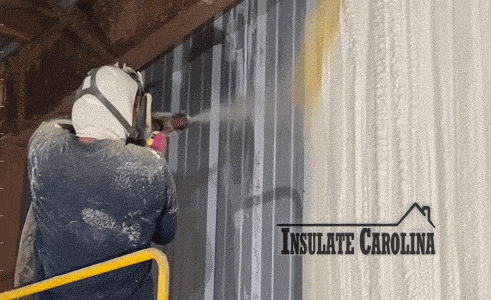WHY USE SPRAY FOAM INSULATION?
Spray foam is applied as a liquid and quickly expands, creating an
air tight seal.
Spray foam is also self-supporting, which enables its use on the underside of roofs and floors.
-
Spray foam insulation can reduce energy bills by up to 40%.
Spray foam outlasts fiberglass batts and has a return on the investment average of 4 years.
Spray foam offers opportunities to lower maintenance costs on roofing systems.
Homeowners, builders and architects may be able to qualify for tax incentives, rebates, grants or certifications.
-
Spray foam insulation creates a complete air-tight seal, preventing drafts and providing better indoor temperature control. Good indoor temperature control can have a dramatic effect on household comfort.
Spray foam can serve as a sound barrier, making your home or office a more peaceful environment. Open cell foam can reduce high frequency noise, and closed cell foam can reduce low-frequency noise.
Sealing gaps with spray foam can provide a barrier against pollen, dust, and insects. Reducing external allergens can be especially helpful in households with allergy sufferers.
-
According to the National Association of Home Builders spray foam insulation adds 75% to 200% STRUCTURAL STRENGTH to your home, given its high compressive / tensile strength and its ability to act as a bonding agent.
Clemson University’s research shows that spray foam can significantly improve the attachment of roof sheathing to trusses and rafters, similar to the way construction adhesives help bond a floor system together.
-
Spray foam is a long lasting solution which does not require replacement, unlike fiberglass batts which degrade over time in the presence of moisture or animal activity.
Energy-efficient products like SPF can help builders earn credits for green building certification programs and other sustainability standards.
Spray foam insulation creates a highly efficient building envelope enables buildings to be heated and cooled with the least possible consumption of the natural resources reducing the carbon footprint of your home by 40% or more.


